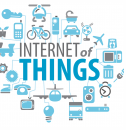In Your Home
This is actually a much bigger deal than most people realize. When the Internet first started coming into people’s homes, not much thought was given to security. No one knew what a hacker was or understood what they were actually capable of, much less how much it would affect the average person. Now people are much more aware and concerned about the security of internet-based applications. According to conservative estimates, nearly 50 billion devices will have connectivity with the IoT by the year 2020, meaning there will be a veritable host of data from which hackers can devise scary activities.
The Many Applications for This Technology
Consider the different applications for this type of technology, such as entire cities becoming connected, utilizing systems for traffic lights and the cars themselves. Of course, the implications as far as making life easier are many; however, the implications for sinister use are just as numerable. With the invention of new types of technology comes the responsibility to ensure the new tech is not improperly used, which is why network security is a booming industry, with amounts nearing $60 billion being spent on it annually.
Security Threats
While it may not be in full swing, there are bits of the IoT everywhere. For example, refrigerators and thermostats connected to your mobile phone via an app and the television you can watch Netflix on. This is actually just a fraction of the things available within your home that either can be or are already part of the Internet of Things. But some things that most people don’t pause to consider are:
1) What is the operating system in use for the screen on the fridge?
2) Where does the smart meter that the electric company installed store information? What can someone who hacks into the meter find out about your family?
3) Is it possible to hack into your television? Your thermostat? And what information would be available if someone did?
4) What about the traffic grid that is hooked up to the city’s smart infrastructure? Can someone hack into it and change the timing of red and green lights?
5) If you own a smart car, is it possible for someone to take over the manipulation of the vehicle? And what if you are driving when this occurs?
6) Can the availability of electricity or the availability or quality of water be affected by someone hacking the Internet of Things?
Vulnerabilities Conclusion
The above are all obvious vulnerabilities that have no easy answer. Many people seem to think that if the IoT is pushed with a set of standards behind it, security won’t be an issue, but it remains to be seen if the standards will be designed and implemented by the industries themselves or if private companies will be given this key to the kingdom. Internet security is already a multibillion dollar industry, and having to add new features in order to grant greater protection for the new IoT promises to make this industry ever more expansive. However, this means that the burden of promising to provide the utmost in security is even greater than before.

